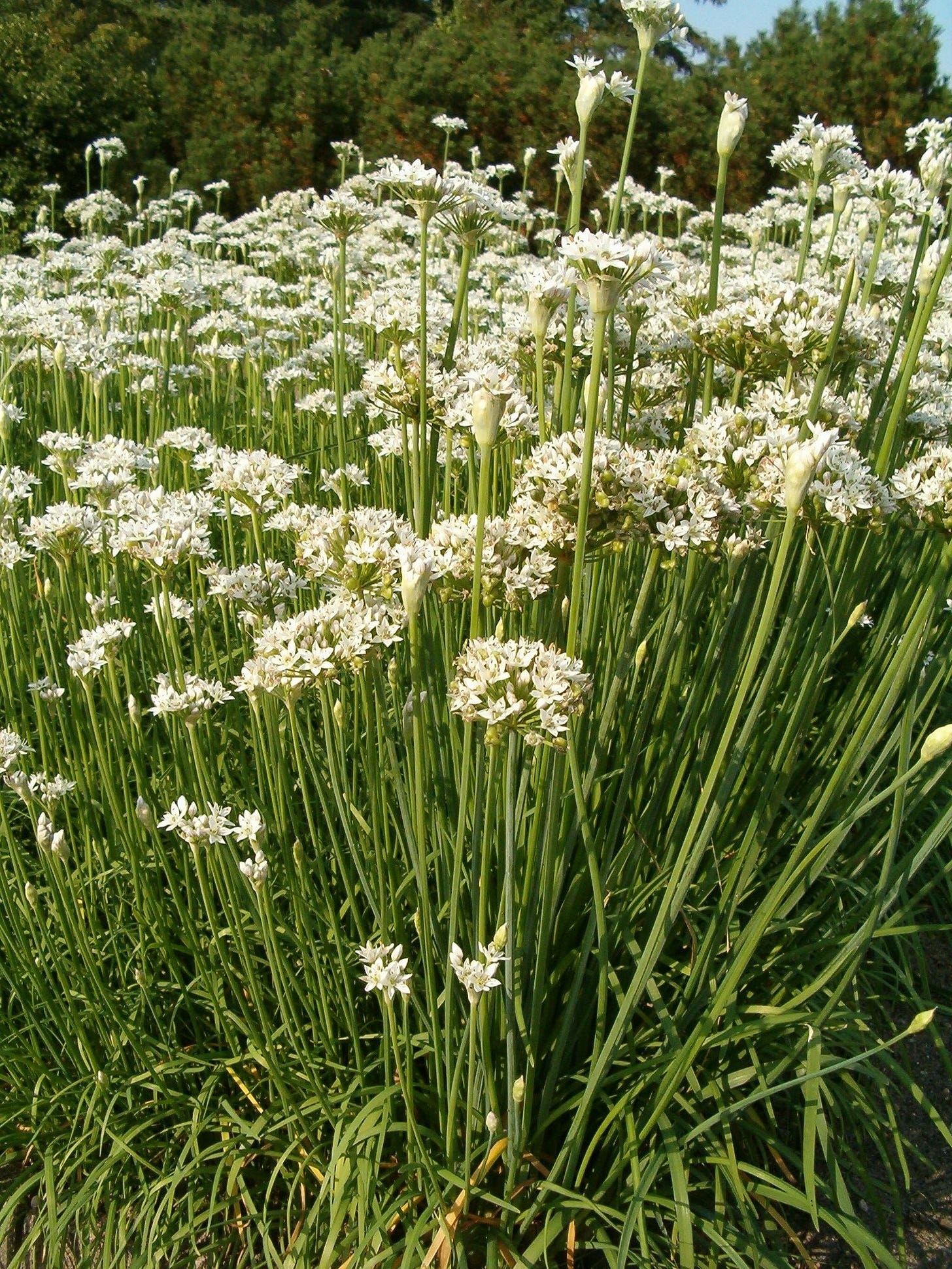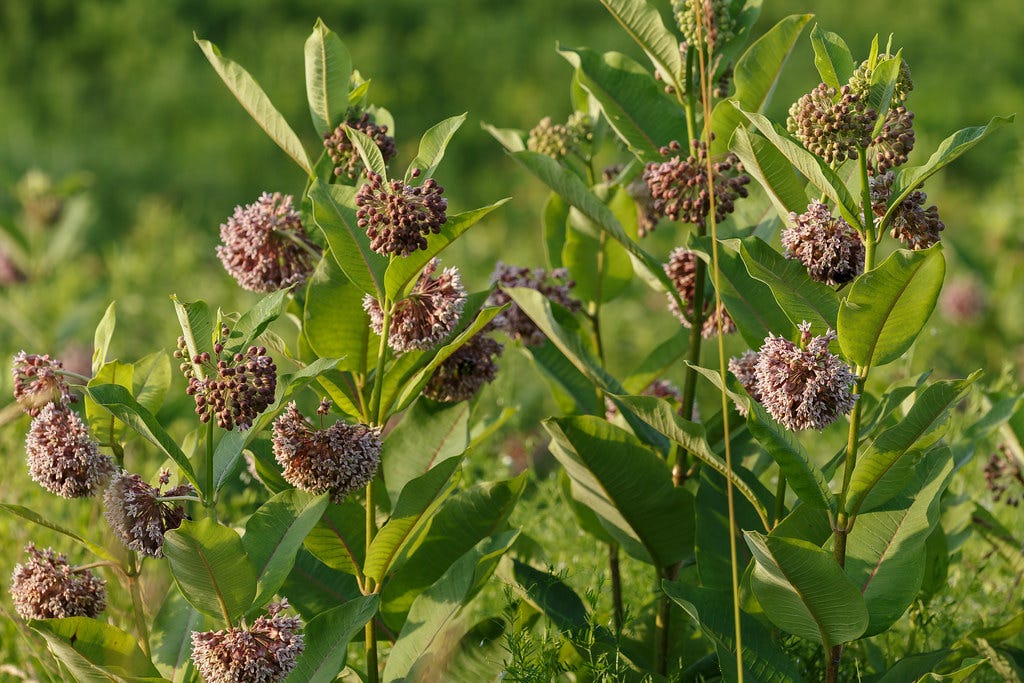ALSO KNOWN AS: skunk eggs, Allium cepa,
How to know
Veined lance stems
White umbels of flowers
Standing atop a single stem
A bulb with layered leaves below ground
Long wired roots
A papery covering that cracks and releases the umbel of flowers as they bloom
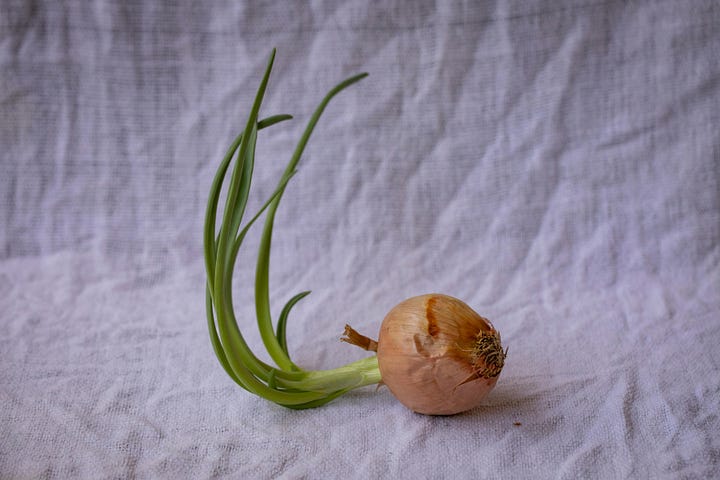
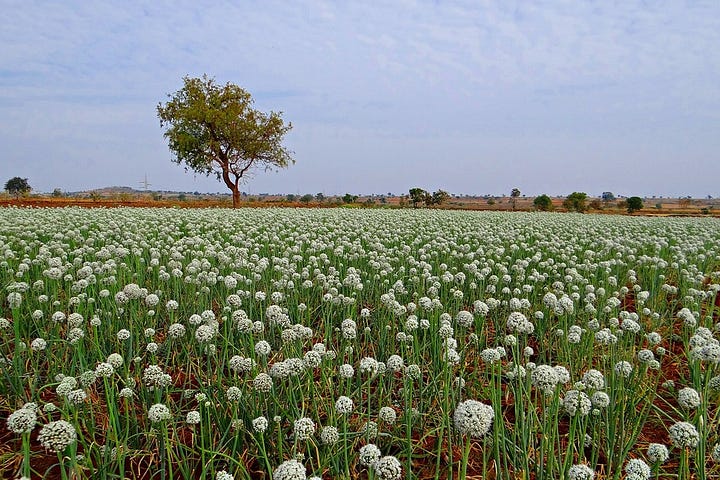
When I am half asleep - work tired - and find myself at Union Square on the NQRW platform I tend to contemplate the tiles on the walls across the train track. I don’t know how many people have noticed this, but hidden in the filth of this New York City subway station, several wall tiles of the Union Square look like little medieval villages. I lean against the disgusting column with 25 coats of paint and regard this little scene above the rats and the tiny subway streams. A single tile has within it, thatched houses and rolling green hills. A lovely summer day is evoked in a single tile, beside the tile are the black mosaiced letters: Union Square. I pronounce it as “onion” in my head and giggle.
Who Heals and Brings Tears
Only now do I know that my phonetic ticks have a botanical source. Onion comes from the Latin unus, which etymologically, connects it to the prefix, uni. One, as in unified: many which are brought together. The way the onion looks like it has been carefully collected in layers of flesh.
It turns out, the onion has represented unity and solidarity no matter where it’s grown. And it’s grown everywhere.
The onion may be one of the oldest cultivated crops in the world. It likely is native to Northern Indian, the middle of China and Iran. It grows in well draining loam. It can be slightly silty or sandy, but it has to have a fair amount of organic matter to grow, and once it does, the bulb gets fat. You can tell a crop of onion by the beige papery tunic billowing up around its base.
Even though the onion doesn’t call affection to itself. It’s a little standoffish as a rule because of its gritty family. Closely related to the swashbuckling garlic, scallion, chive, and leeks, the onion holds a fat round crown as a worldwide culinary king.
In all of the alliums - and we will get to garlic - there is tremendous sulfuric power, a force not to be reckoned with, a taste that, when eaten raw, can make the jaw clench - can make vampires wither, and squelch our faces in a waterfall of tears. And while garlic generally keeps its flavor through cooking and drying, the onion transforms. What was once a tremendous flavor, a flavor so strong we feel it with our whole body, through tears, through a piqued smell, the onion is cooked to sweetness.
Onion is not a food of royalty, though it pervades all classes of people throughout history, from kings to peasants, and enslaved peoples. From India to Afghanistan onions are used in traditional dishes. Onions were called for in ancient Sumerian tablets recipes. Egyptians ate bread and onions. In ancient Egypt, onions were believed to strengthen whoever ate it, so it was rationed to slaves who built the pyramids. However this did not stop the onion from being a revered symbol. The perpetual opening of the onion made it a sacred symbol to ancient Egyptian culture. In the sacking of the great pyramids, onions were found in the eyes of Ramses IV. The onion is the perfect image of meditation, of strength, of time. It pushes from the inside out, ever insistent that there is no center except in the widening concentric circles. A sacred solidarity of fat leaves that perpetually push to make room for the next. They were funerary offerings in Egypt, like the embrace of many arms, a mummified organ, wrapped again and again, reminding us, there is no center, there is only forward movement from it.
Much later, in the terrible colosseums, gladiators would anoint themselves with the fleshy bulb to imbue them with strength.
Ulysses S. Grant famously stated that he would not move his troops without onions, as they were used to staunch wounds. In medieval Europe onions were used for nearly every malady, from impotence, to snake bites, to epilepsy, fever, baldness, and sore throat. The onion appears in traditional Chinese and Vedic medicine, as well as that of Ancient Greece, as a diuretic, healer of joints and eyes, and as an aphrodisiac.
No matter how we slice it, though - even with pure silver spoons in our mouths - it will bring tears to our eyes.
But the sulfuric acid activity would never happen if the inside of the flesh was not exposed to air. Latent amino acids are transformed once a knife breaks the cell wall of the onion, initiating the tear ducts in our eyes to respond as if we are under attack. The nerve endings act as if they are in pain. Thus the onion soothes, while inducing a small level of catastrophe. In this way, the onion slows a predator down, and warns it before they eagerly eat the entire crop up.
Even my cat cries when I cut onions, fat tears collect on the dark fur around her eyes, but she persists. It only lasts a minute.
Leaves of the Dirt
Roots are a strange business for plants. In the same way plant species have very different flowers, they also have very different roots. The onion bulb functions in a similar way to a potato in the sense that it is an underground storage center. The bulbs are not really roots. They grow in the cold months right before the spring breaks into summer. They are leaves, meant to keep nutrients and water through winter months, or seasons of drought. This is why onions have that bit of green in the center, where the sun has come in and photosynthesizes the new leaves. Unlike potatoes that have ever growing eyes all around them, the bulb has a clear top and bottom. Below these bulbs are wiry roots that jut out in every direction, not deeply, but enough to nourish the bulb. The paper tunics are old leaves that mark the growth of the onion, like the rings of a tree, telling time, not by years or seasons, but by the sun, the rain, the soil, drawing the leaves out of the earth, wrapping its bulb bit by bit.
There is a wild onion, but the wild onion is not the descendant of the cultivated common onion. The onion we now know, with its beige paper tunic, does not have a clear wild descendant. Rather, this onion is a result of a cross of many species.
Despite being one of the most common foods in the world and its ability to cross pollinates easily, the onion, in general, has a difficult time with reproduction. It is susceptible to pests and rot. The onion fly, the onion eelworm all eat the onions to decimation, and fungi find holes in the hollow stems and rot. This may be why it enlisted the help of humans, whose hands place it in friendly soil, who look after it.
For how strong the onion is in myth, hollowness seems to be its modus operandi. The onion can grow perennially, but when we eat it as food it is less than a year old. The bulb of leaves begins to swell when the days start to lengthen in the spring, pulsing under the ground in a pearly white mass. The leaves grow out of the ground become hollow and have a parallel venation. The bulb and the venation indicate that it is a subfamily of 400 species in the Amaryllidaceae or amaryllis family, which includes the proud narcissus, plants that stand on single stems attached to bulbs with heads of flower umbels (many flowers all opening at once). A plant changes after flowering. Foragers know that some plants are edible, until they flower and become toxic. Pokeweed is a good example of this. Onions, too, are eaten before they bloom. The spring onion, or scallions are eaten before the bulb even begins to develop in the summer.
Onions have white umbel flowers that are perfectly round, each of the pedicels grow in a six stem pattern. Packed on the palm-sized umbel are between 50 and 2,000 flowers. And once they bloom they lose their sweetness.
The pollination of the onion is a tenuous business. In the same way onion can have an unwelcoming taste to some, the bees too are picky about onion. Except on very rare occasions, honeybees are the only animals that will pollinate onion flowers. Honey bees are small. They are the golden color of honey, and they’re smaller than the fat bumble bee. The onion’s flowers first fill with pollen. Onion flowers are open for a relatively long period, three to four weeks, with their most fertile periods being the morning - when the insects are out. Once the pollen is off the tiny anther, they will become female, this way the onion is almost always cross pollinated.
Once they are pollinated, the flowers close and dry, opening again with shimmering triangular seeds like inverse pearls from a papery shell.
These papery shells can be used as dye, yielding that range from orange, to yellow, and brown in tone. The texture of the stalk allows it to be a formidable paper making or textile for its long thin fibers.
Medicinally, it has antibacterial, anti cancerous, and wound healing effects because of the presence of quercetin and anthocyanin chemical aspects. It lowers blood sugar. In many cultures it has been a medicine before a food. If it’s even considered a food now. A colleague of mine, who works with little children, told me that a mixture of onion, garlic, and ginger “cook it with everything, even the skins” she said, and her cold was gone in a matter of three days. Certainly this trio would have the power to touch the most dire illness with healing hands. Chicken noodle soup’s secret power is the onion. The onion is the silent force in countless dishes throughout the world. I think the onion draws the line between food, vegetable, herb, and condiment. It finds itself everywhere.
A good friend (aarushi <3) took a picture of an onion skin and did a poll: “ghost or flesh?” she asked. This image will stay in my mind always. In a way the old skins are a memory. And there are ways that ghosts, or memories, protect us and they slowly expand out further and further away from our present, fleshy, moment.
myth for onion
Music: Keyframe_Audio
Not to be confused with garlic chives. These plants are closely related to onions. But they don’t have that ball shaped inflorescence, and their stems and leaves are thinner.
Or common milkweed. This plant has oblong leaves, and a milky sap. But they have similar round umbels to the onion plant - though the milkweed umbels can be heavier. Their flowers are rather fleshy.
Forager Friendly?
Yes, I mean, this is a cultivated plant! Plant it yourself!
Sources
https://en.wikipedia.org/wiki/Onion
https://wcba.co.za/the-great-onion-pollination-mystery/
https://pmc.ncbi.nlm.nih.gov/articles/PMC7894628/
https://www.onions-usa.org/all-about-onions/history-of-onions/
https://ipm.missouri.edu/meg/2011/3/Onion-A-Brief-History/
https://drawbotanical.com/the-onion-family/
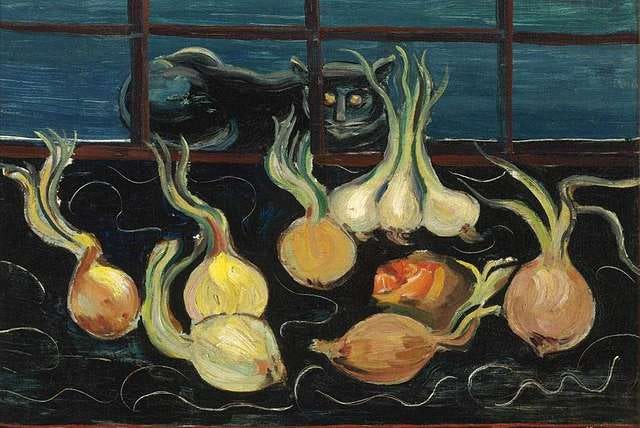
for cousin Andy.




